Part 1: A Review of Archaeology and Archaeoastronomyby Jason Jarrell and Sarah Farmer originally published in Ancient American magazine During a period spanning roughly 500 BC—500 AD, the Eastern Woodlands of North America were the location of the most ambitious earthworks construction episode in world history. These earthworks were the products of two variations of a single cultural continuum known as Adena and Hopewell, respectively. Adena and Hopewell circulated the same exotic power materials, participated in similar patterns of dispersion and coalescence in periodic gatherings to bury the dead, and expressed the same cosmological model in artifacts and earthworks construction. It is now also understood that both groups came together and participated in the co-operative construction of large-scale ritual landscapes sharing common patterns of astronomical alignments and employing the same measurement unit (McCord and Cochran 2008; Romain 2015a, 2015b). For these reasons and others, archaeologists have come to refer to both cultures together as Adena-Hopewell. Earlier Adena mounds range from just a few inches to massive structures over 60 feet in height, such as the Grave Creek Mound in Marshall County, West Virginia and the Miamisburg Mound in Ohio. The first Adena earthworks other than mounds consisted of circular earth wall enclosures with interior ditches and single causewayed entry points. After the beginning of the Ohio Hopewell “phase” in Ohio (ca. 50 BC), the earthworks program evolved to include construction of massive ritual landscapes incorporating large earth wall squares, polygons, octagons, and abstract forms. Archaeologists have established that the cosmology expressed in Adena-Hopewell earthworks corresponds to that of the Native American tribes who inhabited the Eastern Woodlands at the time of historic European contact (Hall 1979, 1997;Romain 2015a). This cosmology is divided into three interconnected worlds: the Above World of the sky and heavens, the Earth World, and the watery Underworld, located beneath the Earth World. The Above World is also the location of the Milky Way galaxy, considered in the Native spirituality to be a “Path” or cosmic “River” which the souls of the departed must navigate to reach the entrance to the Land of the Dead. The three worlds of the Woodland cosmos are inhabited by beings which westerners have considered “supernatural,” although this term is misleading and does not actually represent the Native conception. They are more properly understood to be “other-than-human” entities possessing powers beyond those of regular humankind. One well-known Algonquian term for such a being is Manitou (Manitouk for plural). The Manitouk are not anthropomorphized spirit beings, but rather exist as literal inhabitants of the tiered cosmos (Smith 1995:49). As explained by the notable anthropologist Alfred Irving Hallowell (1934:399), the Manitouk “represent a continuum with the ordinary world of sense perception. They are an integral part of reality and are not super-natural beings in any strict sense of the term.” Elsewhere, Hallowell (2002:38) elaborates, “Other-than-human persons occupy the top rank in the power hierarchy of animate beings. Human beings do not differ from them in kind, but in power.” The occupants of the Above World consist of the stars, sun and moon, and the great Thunderbirds. The Underworld is a watery abyss filled with aquatic creatures and a malignant race of serpent like beings ruled over by a powerful Manitou known to some Algonquian speakers as Mishebeshu. Mishebeshu is depicted on birch bark scrolls, rock art, and earthworks in two major and widespread forms: a gigantic horned serpent or a hybrid of dragon, feline, and serpentine features known as the “Underwater Panther” (Smith 1995). The Earth World is the sensible terrestrial world of living humans, plants, and animals, and is usually envisioned as a flat Earth Disk or island floating above the waters of the Underworld. Water sources such as springs, lakes, rivers, and oceans function as passages between the Underworld of Mishebeshu and the Earth World. The inhabitants of the Above World and Underworld are engaged in an endless and eternal war, which unfolds on the Earth Disk, and both sides interact with the human race. In fact, the actions of the Manitouk—whether they are experienced in altered states of consciousness or in waking life—are considered to shape and control the world and the spiritual and physical lives of human beings, (Smith 1995:49). The Adena-Hopewell aligned their earthworks to solar, lunar, and other celestial events, as well as natural landscape features, which referenced both astral phenomena and other cosmological concepts, such as the watery Underworld, the Above World, and the Milky Way path of souls. The Adena-Hopewell burial mounds are believed to have served as symbolic representations of an Axis Mundi—a sacred tree or holy mountain—which united the three worlds of the Woodland cosmos (Carr 2008; Romain 2015a). By burying their dead within the Axis Mundi, Adena-Hopewell practitioners may have sought to manipulate the journey of the souls of the deceased so that they entered the “Path of Souls”—the Milky Way Galaxy in the Above World—and followed it to the entrance to the Land of the Dead (Romain 2015a, 2015b). People participating in the Adena-Hopewell Culture likely considered themselves to have a reciprocal power relationship with the Manitouk inhabiting the worlds above and below them. Romain (2009:161) has suggested that large caches of artifacts made from exotic materials such as copper, mica, shell, and other substances that have been found in large Hopewell burial mounds in southern Ohio and Indiana could represent the return of power-imbued objects to the Manitouk in reciprocation for benefits associated with them, including abundant crops and good health. Indeed, in historic times Native Americans were still known to make offerings of shell and copper at waterfalls, whirlpools, and other natural watery features in thanksgiving for health, long life, and abundance of plant and animal food (Romain 2009:160). The Algonquian speaking peoples of the Great Lakes region have maintained the very ancient tradition of burning tobacco to the Thunderbirds in exchange for protection from the Great Serpents, whom they continually strike down with powerful lightning and tear apart with their claws (Smith 1995). Archaeologists have long recognized that the copper breastplates and headdresses, copper and mica effigies, smoking pipes, engraved stone and clay tablets, and effigy mounds of Adena-Hopewell often portray Manitouk of Eastern Woodlands cosmology, such as the Thunderbirds or the Great Underworld Serpent. But there are other ancient Manitouk represented in the earthworks and artifacts, which have not yet been fully realized in major studies of Adena-Hopewell. In this study we will utilize the discoveries of archaeology and archaeoastronomy, as well as the traditions of Native American tribes, to unveil the identity of a powerful “other-than-human” entity who was at the very heart of the Adena-Hopewell ideology. A comprehensive overview of the archaeoastronomy of Adena-Hopewell earthworks in Ohio is far beyond the scope of the present study. Neither is this the place for a complete review of all relevant features of the sites mentioned. Therefore, the reader who is interested in learning more is encouraged to study the excellent publications by archaeologists and archaeoastronomers cited in the text. In particular, the work of Dr. William F. Romain (2009; 2015a; 2015b; 2018) is an invaluable resource for researching this subject. Adena-Hopewell spans roughly 500 BC to 500 AD, and archaeoastronomers usually determine the solar and lunar azimuths for earthwork alignments in southern Ohio using dates that overlap this time period (usually around 100 AD) (Romain 2015a:37). The people participating in the Adena-Hopewell Culture were not the first to raise burial mounds and earthworks in Eastern North America or to incorporate celestial alignments into these ancient structures. For example, Archaic earthworks in Louisiana such as Poverty Point (1600 BC) and Watson Brake (3500 BC) have been found to incorporate solar alignments. However, as Romain (2018:329) has emphasized, the practice of incorporating lunar alignments to track the 18.6-year cycle of the moon “seems to first enter the record during the Woodland period, with Adena-Hopewell groups.” The greatest testimony to the emergent lunar consciousness of Adena-Hopewell is the emphasis placed upon the moon at the largest and most perfectly aligned earthworks landscape ever constructed: the Newark Earthworks in Licking County, Ohio. The Newark EarthworksThe Newark Earthworks originally covered more than 4 square miles of a river valley where Raccoon Creek and the North and South Forks of the Licking River join to form the main Licking River. The massive site is believed to have been in use by the Hopewell between 100-400 AD (Lepper 2016). Although awareness Newark is eclipsed by the fame of sites such as Stonehenge or the Great Pyramid, the earthworks nonetheless represent an achievement unparalleled among astronomically aligned ritual sites from around the world. As stated by Romain (2015a:55), “The Newark Earthworks Complex is the most sophisticated and intricate earthwork complex of its kind in the world.” Pioneering archaeo-astronomers Ray Hively and Robert Horn (2016:90) recently observed, “There is no precedent for prehistoric earthworks with the combination of scale, geometric accuracy, and precision we find at Newark.” The earthworks at Newark were constructed so as to emphasize the extreme minimum and maximum rises in the 18.6-year lunar cycle. Hively & Horn (2016:76-77) have pointed out the remarkable fact that the sheer number of lunar alignments at Newark would have required a great period of exploration and astronomical observations spanning multiple generations prior to the building of the earthworks themselves, which would only have been possible “if a significant portion of the population shared enchantment with the moon and fascination with the power of those who could reliably anticipate it.” The ancient astronomers first noticed that four natural hilltops around the Newark valley were aligned to the winter and summer solstice sunsets and sunrises, and once these alignments were recorded, the earthworks were subsequently constructed in the valley below “so that lines between the designated hilltops and the centers of major figures marked the extreme north and south moonsets and moonrises” (Hively & Horn 2016:68). Such a project as Newark could only have been motivated by a sense of reverence, awe, mystery, and fear associated with “the cosmic power represented by the moon” (Hively and Horn 2016:72). Unfortunately, large portions of the Newark Earthworks have been destroyed by centuries of “development,” and one of the surviving components is even the location of a modern golf course, perfectly symbolizing the elevation of amusement and the mundane over the numinous that characterizes the civilization that has been built over the ruins of the Adena-Hopewell. Surviving components of Newark include the Great Circle and the Observatory Circle—Octagon Complex, while destroyed features include an elliptical earthwork enclosing at least 11 burial mounds and a near-perfect square with walls averaging 931 feet long. There were also once many burial mounds, smaller circular earthen enclosures, and other structures, which are poorly documented. The Great CircleThe Great Circle is a circular earth wall enclosure roughly 1,178 feet in diameter and which varied between 5 and 14 feet in height during the first surveys in the 1800s (Romain 2015b:62). A large ditch follows the interior of the circular wall, which varied between 28 and 41 feet in width and 8 and 13 feet in depth at the time of the early surveys, when it was still observed to sometimes be half filled with water (Lepper 2016:48). There is a single, wide causeway entrance in the eastern section of the circle. The wall of the circle was originally constructed in a multi-stage sequence that employed soils of different colors and textures for the inner and outer facings of the circle, and a radiocarbon date of 2110 +/- 80 BP has been obtained from the base of the wall (Lepper 2016:47). From the very center of the Great Circle, the azimuth of the moon’s minimum north rise was established and the causeway entrance was built in that direction. Thus, the Great Circle is aligned to the moon’s minimum north rise from the center through the entrance (Romain 2015a:63-64.). The center of the Great Circle is also the location of an effigy mound that early observers recognized as being made in the image of an eagle or some other bird. Early witness and investigator Isaac Smucker (1884:12) described Eagle Mound as “in the form and shape of an eagle in flight, with wings outspread…clearly of the effigy class of the works of the Mound Builders.” Smucker (1884:12) dug into the center of the Eagle Mound and found “an altar built of stone, upon which were found ashes, charcoal and calcined bones”. In 1928, Emerson Greenman conducted further excavations at the Eagle Mound, discovering the postholes of a wooden temple or house, which predated the covering mound (Lepper 2016:47). The timber structure was nearly 100 feet long and 23 feet wide, with wing-like walls extending out from both sides at a 40-degree angle from the central axis. In the center of the temple Greenman found a rectangular clay basin, which showed evidence of extreme and repeated burning episodes. He also found points, lithic fragments, pieces of mica, charred matting, bone fragments, and a 5.5 inch long copper crescent on the temple floor (Lepper 2016:47; Romain2015b:63). As will be described later, copper crescents have been interpreted as Adena-Hopewell lunar symbols. Romain (2015a:64) has superimposed the postmold pattern of the wooden temple with LiDAR imagery to demonstrate that the major axis of the Eagle Mound temple itself was aligned with the minimum north rise of the moon as it would have appeared through the gateway of the Great Circle. Furthermore, a crescent shaped earth mound was once located within the Great Circle directly adjacent to Eagle Mound, the concave center of which was bisected by the azimuth for the moon’s minimum north rise (Romain 2015a:64). Circular earthworks with interior ditches such as the Newark Great Circle have been considered models of the island earth surrounded by a primordial sea in the Woodland cosmos. In the case of the Great Circle, the model would appear to be closely associated with the power of the moon and the symbol of the Thunderbird. Observatory Circle - Octagon ComplexThe Adena-Hopewell utilized a measurement unit of 1,054 feet to serve as the basis for the construction of numerous ancient earthworks in the Ohio Valley, as both a standard and in multiples and submultiples (Romain 2015a). This unit (often referred to as the “HMU”—or “Hopewell Measurement Unit”) is perfectly expressed in the diameter of the Observatory Circle at Newark, which is precisely 1,054 feet in diameter (Romain 2005). The Observatory Circle is connected to the large Octagon by a short set of parallel walls. The Observatory Mound is an artificial platform 10 feet in height, situated on the major axis of the Observatory Circle and incorporated into its perimeter directly opposite of the gateway and parallel walls leading to the Octagon (Romain 2015a:68). From the Observation Mound, the maximum north rise of the moon is visible through the set of parallel walls connecting the Observatory Circle to the Octagon (Romain 2015b:62). Also, when viewed from the interior entryway of the Newark Great Circle, the summer solstice sunset aligns with the Observatory Mound (Romain 2015a:68). The Octagon connected to the Observatory Circle was apparently built around a square that would be equal to one HMU on each side (Romain 2015b:59). The walls making up the Octagon are each around 550 feet in length and between 5 and 6 feet in height, and each of the eight corners of the earthwork is marked by a gateway between 50 and 90 feet in width. Rectangular platform mounds measuring roughly 100 feet long, 80 feet in width, and 5-6 feet in height block each of the eight gateways (Lepper 2016:48). Built into the Octagon are alignments to the lunar minimum and maximum north rises, the maximum north set, and the maximum south rise and minimum south set (Romain 2015b:62). Wright SquareThe Wright Square was a nearly perfect square shaped earthwork with walls averaging 931 feet in length connected by parallel walls to other components of Newark, including the Great Circle, the Octagon, and the Cherry Valley Ellipse (Lepper 2016:48). The perimeter of the Wright Square was equal to the circumference of the Great Circle, while its total area was equivalent to that of the Observatory Circle (Lepper 2016:48). While the earthwork has been destroyed, Romain (2015a:60) has found that the square’s center was situated at the intersection of the lunar south maximum set and south minimum rise azimuths. Small Newark Circles and Crescents: Further Lunar Symbolism The destroyed features of the Newark landscape include many smaller circular earthwork enclosures, which as Romain (2015a:77) has documented, were built along a trajectory parallel with the major axis of the Octagon and aligned to the lunar maximum north rise. Early documentation indicates that sets of large and smaller circular earthworks at Newark may have been divided into two clusters of 18-21 and 19 circles, respectively, both numbers which approximate the number of years in the moon’s 18.6-year cycle (Romain 2015a:274). Some of the small circles featured depressions in the central enclosed areas, several of which were found in the 1800s to contain flint chips, clay nodules, burned stones, paints, pieces of pottery, and plates of mica, the silvery surfaces of which may have served as lunar symbolism (Romain 2015a:273). Several of the smaller Newark circles are known to have enclosed crescent shaped earth banks open at the east or north-east, which is the area of the sky where the waning crescent moon would appear in the early pre-dawn hours (Romain 2015a:274). Significantly, this is the same area of the sky where the Milky Way—the Native American “Path of Souls”—would appear to originate on the night of the summer solstice. Commenting on these connections, Romain (Arch Sacred p. 274) suggests, “the waning crescent moon was one of the elements involved in the mythology surrounding the journey of the soul to the Land of the Dead.” The Cherry Valley MoundsThe Cherry Valley works consisted of a large earthen ellipse measuring 1800 x 1500 feet, which contained between 11 and 17 burial mounds (Romain 2015b:59). Also located within the ellipse were a smaller circular earthwork enclosure about 200 feet in diameter and at least one platform mound (Lepper 2016:50). Romain (2015a:65) has utilized available information on the ellipse to determine that the diagonal axis of the earthwork was oriented to summer solstice sunset, and also that at least half the mounds inside the enclosure were located along the same axis. A pair of parallel earth walls which lead southwest from the Ellipse followed the trajectory of the Milky Way Galaxy arc on the night of the summer solstice sunset (Romain 2015a:65). Indeed, Romain (2015b:59) has suggested that the Ellipse and associated mounds were the area of the Newark ritual landscape where the journey of the souls of the deceased to the Land of the Dead actually began. Natural LandscapeAs stated by Hively and Horn (2016:68), the multi-generational construction project at Newark was “designed and located to achieve an integrated harmony with the features of the local terrain and directions established by extreme rise and set points of the moon.” As an example of sacred terrain at Newark, the lunar maximum north rise sightline viewable from one of the natural hilltops extends along the same azimuth as a river terrace flanking the western side of the Observatory Circle—Octagon complex (Romain 2015a:41). Thus, Newark represents the deliberate incorporation of both landscape and sky into a “synchronous and harmonious relationship” (Romain 2015a:41). At the time of the construction of the earthworks, the Newark valley was a prairie setting in which a natural feature known as Geller Hill would have been especially prominent (Romain 2005). Located around 1 mile southwest of the Observatory Circle and Octagon, Geller Hill is a Glacial Kame about 35 feet high, 1150 feet long, and 700 feet wide at the base (Romain 2015b). From this vantage point, an observer would be able to witness the maximum north moonrise over the Newark Valley every 18.6 years (Romain 2015a:67). There is evidence that Geller Hill was deliberately incorporated into the Newark symbolic web: The apex of the hill, the center of the Great Circle, and the center of the Octagon form an isosceles triangle in the landscape (Romain 2005). A natural lake bog was once located within the Newark Earthworks, which in the 1800s still covered around 150 acres, and would have alternated between the level of a lake and dry land. The bog would also have been the home of exotic wildlife, including the massasauga rattlesnake (Romain 2015a:43). Research by Romain (2015a:43) suggests that the water levels of the lake may have been deliberately managed by damming and directing the water, which drained to the South Fork Licking River when levels were too high. When observed from Geller Hill, the lunar maximum north rise would appear to emerge in the northeast precisely between the Observatory Circle—Octagon and the Great Circle, and directly over the lake bog (Romain 2015b:59). Mapping the Cosmos in the Ohio Landscape Recent research by Dr. Romain (2015b) has demonstrated that Newark was a primary component in a relational web of earthworks spanning a large area of prehistoric Ohio. There was once a set of parallel earth walls set 150 feet apart and measuring 1.5—2 feet in height and between 19 and 30 feet wide which ran from the Newark Observatory Circle—Octagon complex to Ramp Creek, about 2.5 miles to the south (Romain 2015a:64-69). This pathway is known as the “Great Hopewell Road” (hereafter GHR). Romain (2015b:72) suggests that Ramp Creek may have been symbolic of a river or stream which souls had to cross in many Native American traditions of the journey to the Land of the Dead, and that the GHR may have been considered to continue beyond Ramp Creek in a different dimension. The Milky Way Galaxy appears to “vault” or “arc” over the earth, extending in the summer from northeast to southwest, while arcing in the winter from northwest to southeast. Romain (2014a:74) explains that on the date of the summer solstice between 100 BC and 200 AD, the northeastern beginning and southwestern terminus of the Milky Way Arc in the sky extended along the same trajectory as the GHR. Therefore, at nightfall on the summer solstice, the GHR mirrored the direction of the Milky Way Galaxy above the landscape. Also, the GHR was concave in profile, which likely caused the inner area between the walls to be watery or muddy most of the time, perhaps symbolic of the watery underworld or as a mirror of the Milky Way above (Romain 2015a:271-272.). Remarkably, Romain (2015a:72) has found that if continued beyond Ramp Creek on the night of the summer solstice, the trajectory of the GHR/Milky Way arc continues directly to the base of Sugarloaf Mountain, located 50 miles to the southwest at Chillicothe in Ross County, Ohio. A standout mountain that is clearly visible for miles against the eastern horizon, Sugarloaf Mountain is believed to have served as “the main axis mundi for the south-central Ohio Adena-Hopewell” (Romain 2015a:132). The solar and lunar alignments of numerous Adena-Hopewell sites in southern Ohio have been documented so as to incorporate or reference Sugarloaf Mountain, including Mound City, the Worthington Estate Adena Mound, the Shriver Circle earthwork, the Hopeton Earthworks, the Stitt Mound, the Circleville works, and the Biggs Mound located south of the Ohio River in Kentucky (Romain 2015a; 2015b). Dr. Romain (2015b) has proposed a model for the actual function of this interrelated earthworks landscape of ancient Ohio. The years for the great rites would have been determined by the lunar alignments of the Great Circle and Observatory Circle—Octagon earthworks at Newark. Roughly every 9.5 years, the relevant dates arrived when either of these earthworks aligned with the lunar maximum north or minimum north limit. During this important year, the great ceremonies of the dead were held on the summer solstice sunset, when the Milky Way Path of Souls and the GHR aligned and were activated to facilitate the journey of the souls of the deceased. The bodies of the dead may have been processed for burial or cremated at the Eagle Mound temple at the center of the Great Circle, after which the remains were interred in the mound field within the Ellipse. With the physical bodies buried, the souls of the deceased were sent along the GHR/Milky Way corridor as “the pathway to the Realm of the Dead,” which lead 52 miles southwest to Sugarloaf Mountain, the great axis mundi and portal to the Otherworld (Romain 2015b:72). Clearly, the moon was an essential factor in the Adena-Hopewell concept of the fate of the souls of the dead. As stated by Dr. Romain (2015b:66), “Perhaps it was believed that as the moon rose from the northeast horizon at these special times, that celestial entity transported or otherwise assisted the soul in making the transitional leap from This World to the Otherworld Milky Way Path.” Lunar Symbolic ArtifactsWhile there have been more solar alignments detected at Adena-Hopewell sites than lunar, the reality is that the earthworks are simply one element reflecting a prominent cosmological role for the moon. Other cultural traits considered representative of the “lunar awareness” of Adena-Hopewell include stone and clay engraved tablets featuring lunar counts, burial houses beneath mounds that are aligned to the moon, crescent shaped bannerstones, and exotic ornamental lunar crescents made of mica or copper (Romain 2015a:244-245). Romain (1992a) has documented the lunar orientations of charnel houses beneath several Hopewell burial mounds in southern Ohio. According to his research, charnel houses beneath the Edwin Harness mound, Mound City mounds 10 and 13, the Tremper Mound, and the burial platforms under Seip Mound 1 all feature alignments variously to the lunar minimum and maximum standstills or minimum north and south rising and setting positions. Romain (1992a:46) interprets the alignments to suggest that the dead were oriented to the moon as “the primary celestial body of their new, Otherworld abode.” The stone and clay engraved tablets exhibiting lunar emphasis have been found primarily in Adena burial mounds. According to research by Dr. Romain (1991), as many as 6 tablets (the Cincinnati, Meigs, Berlin, Low, Allen, and Gaitskill Clay tablets) appear to incorporate summer and winter solstice azimuths into their designs, while 4 of the tablets (Wilmington, Waverly, Lakin B, and Gaitskill Stone) incorporate the moon’s major and minor standstill azimuths. The Cincinnati tablet exhibits a lunar count system to determine the time between the summer and winter solstices in a notational system, which references the phases of the moon. Romain (1992b) also found that the Wamsley tablet utilizes a system referencing the summer and winter solstice azimuths, the lunar synodic month, and the 8 phases of the moon, including the 3 days of the invisible New Moon. Carr and Case (2006:194) point out that five of the Adena tablets depict the World Tree or Axis Mundi with roots in the Below realm and branches in the Above realm: the Cincinnati, Gaitskill, Lakin A, Meigs, and Wilmington tablets. They furthermore note that four of these (Cincinnati, Lakin A, Meigs, and Wilmington) feature images of birds at the top of the tree, while two (Gaitskill and Lakin A) depict birds ascending the levels of the tree, and suggest that the birds represent shamans assuming the forms of “birdmen” in spirit flight, visiting the worlds above and below. Thus, the recurring lunar and solstice alignments are also found on objects likely reflecting the ritual practices of Adena-Hopewell shamans. In addition to the Adena tablets, Romain (1991:48) also found that one copper plate and two copper cutouts from the Hopewell Farm site and a copper breastplate and copper cutout from Mound City variously feature alignments to the lunar minimum and maximum standstills and summer and winter solstice azimuths. The objects from Mound city exhibit imagery of raptorial bird heads and may also have functioned as ritual paraphernalia. The lunar Adena-Hopewell artifacts most obviously associated with shamanism are the copper and mica crescents. At the Dover Mound in Mason County, Kentucky, William S. Webb (1959:17-19) discovered the remains of a 35-40 year old Adena shaman buried with two mica sheets, two copper bracelets, a copper spiral finger ring, a copper triangular pendant, and two parts of the jaw of a puma on the sides of the skull. A group of mica crescents were found at the feet of the skeleton, near three piles of different colored ocher, which were originally deposited in containers. A flint blade and several flint fragments had been placed on top of the mica crescents. Webb interpreted the puma jaws and mica crescents to be elements of a costume worn by a “puma man” shaman. A male burial in the upper tomb of the Grave Creek Mound in Marshall County, West Virginia included mica crescents, which have been interpreted as making up part of a headdress worn by a powerful Adena shaman or priest (Hemmings 1984: 40). Mica crescent headdresses are also frequently found with sub-adults. At the Adena Mound in Chillicothe, Ohio, Mills (1907:11) unearthed the remains of an adolescent buried with two copper bracelets, a cup marked sandstone, a broken pot and “a head-dress made of large strips of mica cut into shape and pierced with holes for attachment.” The mica strips of the headdress were crescent shaped. In light of this discovery it is worth pointing out that on the date of the maximum north moonrise in 100 AD, the moon would have appeared over Sugarloaf Mountain if observed from the location of the Adena Mound (Romain 2015a:131). In the late 1800s, Warren K. Moorehead made a similar discovery at the Slate Mills Mound Group 4 miles west of Chillicothe, where the remains of an infant were found with a copper bracelet, shell and copper beads, and several pieces of mica on the forehead “cut in the form of a half-crescent, with smooth edges and rounded points. Each plate had several small holes punched in it” (1892:161). Another child in the same tomb was buried with a necklace of shell beads and had on its forehead “a single plate of mica like those above described, but much thicker, and long enough to reach down over each temporal bone.” At the Robbins Mound in Mason County, Kentucky, Webb and Elliot (1942) discovered the remains of a 7-9 year old male child with three copper bracelets and a headdress of mica crescents. Henry (2017:216) remarks that this burial was “the most elaborately marked burial in the entire mound” and suggests that that the mica crescents indicate the addition of a new “component of great cosmological power” by the Robbins Mound coalition. At the Wright Mound in Montgomery County, Kentucky, Webb (1940:43) uncovered Burial 17; an 18-22 year old female interred in an elaborate log tomb with two copper bracelets, a necklace of disk shell beads, and “at the head a copper crescent of sheet metal, evidently a headdress.” Between the femora and partly under the pelvis of this burial were the remains of an infant. This burial was made during a phase of the Wright Mound thought to represent an emergence or shift in distinct roles among the local Adena coalition (Henry and Barrier 2016). The lunar-cosmological concept must have persisted, since in the final layer of the mound, Webb (1940:68-69) discovered a 15-17 year old female buried in a log tomb, with two copper bracelets, disk shell beads, pieces of a conch shell, a sandstone whetstone, and two mica crescents which “may have constituted a portion of a headdress” beneath the skull. William S. Webb (1943) also discovered crescents with multiple burials in the largest tumulus of the Crigler Mound Group in Boone County Kentucky (Be 20). The Crigler Mound had been built over the former location of an Adena paired post circle (or “timber henge”) 56 feet in diameter with a single entry way on the south side. Post Circles beneath Adena mounds are considered representative of earlier phases of site use, hosting ceremonies for an unknown length of time before being decommissioned for the construction of a burial mound over the area (Purtill et al. 2014). The spaces within the post circles have been interpreted as ceremonial precincts for communal feasting, rites of passage, and rites of the dead buried in the actual mound once construction began (Clay and Niquette 1992; Purtill et al. 2014; Olson 2016). Crigler Tomb 5 was located in the corner of the post circle directly opposite the entrance, and consisted of a “raised rectangular platform of clay, marked by four large postholes, one at each corner,” on top of which was a rectangular log structure measuring 11 x 16 feet (Webb 1943:509). Burial 11 had been laid upon a bark floor within Tomb 5 and then covered over with another layer of bark. This was the extended skeleton of a 40-55 year old male buried with 1 flint point, a copper bead bracelet on each forearm, and “fragments of mica” at the head area which formed parts of “one or more small crescents” of a headdress (Webb 1943:529). Webb and Snow (1945:280) also observed that Burial 11 “shows graphite on the forehead, cheekbones and clavicles. The lower extremities, including the hip region were covered with lumps of red ochre”. Three cremations had also been deposited in the northeastern and northwestern corners of the tomb. Tomb 5 was eventually surrounded by an earthen wall with retaining posts and the top sealed with a log roof and deposit of earth containing Burial 8 before finally being covered by a primary earthen mound (Webb 1943:513-517). Large Adena log tombs have been interpreted to serve as crypts where the bodies of the local dead were processed over time (Henry and Barrier 2016:95; Clay 2013:65). Research by Michael Striker (2008:19), indicates that Adena households may have then curetted their dead for an unknown length of time before mound burial, at which point they joined the archetypal ancestors. When the sacred use of the tombs concluded final burials were made in the structures—sometimes along with cremated remains burned elsewhere—before they were mounded over (Clay 2013:65). It has been suggested that the decision to construct Adena mounds over sacred space was triggered by the death of influential local shamans or priests (Hemmings 1984; McConaughy 2015). Indeed, in his reconstruction of the history of the Crigler site, Webb (1943:515) considered the decommissioning of the post circle and beginning of mound construction to have commenced “with the death of the individual designated as Burial 11.” Perhaps this individual was a local processor of the dead who also guided the souls of the deceased to the Land of the Dead. Upon his death, the body was placed in the Tomb 5 processing area and the local Adena people brought the remains of their dead back to the location for burial in the Crigler Mound. Evidence of this procedure was found in the form of the “scattered remains of many cremated bodies,” which had been burned elsewhere and then deposited on the Crigler Mound floor near Tomb 5 (Webb 1943:526). If Crigler burial 5 was indeed a guide of the dead, then the lunar crescents suggest a connection to the lunar power as also embodied in the alignments of sites such as the Newark Earthworks. As at the Wright site, the role represented by the lunar crescents persisted over time at Crigler Mound. Burial 8 was a 6-13 year old individual of unknown sex found in the earth fill covering of Tomb 11. According to Webb (1943:512), “In the vicinity of the skull and over it were fragments of sheet mica, exhibiting parallel edges, which suggest they may have constituted a crescent head dress.” Crigler Burial 7 (Webb 1943:512) consisted of the dismembered skeletal remains of a 12-15 year old male with 22 disc shell beads, and “scraps of sheet mica, which were evidently parts of a crescent. The many fragments showed slightly curved cut edges, and were perforated by punched holes as if they had been sewed together.” To be sure, crescents have been found in other contexts at Adena-Hopewell sites. Yet as this brief survey shows, in the Ohio Valley they are frequently found with individuals who appear to have served as shamans and/or guides of the dead, and also with infants and very young individuals. Thus far, we have reviewed the evidence that the Adena-Hopewell moon was an essential power in the journey of the souls of the dead and shamanic practices. In Part 2 of this study, Native American tradition and ethnographic studies will be explored in order to reveal the identity of the ancient Manitou behind this influential lunar force. References:Carr, Christopher.
2008. World View and the Dynamics of Change: The Beginning and the end of Scioto Hopewell Culture and Lifeways. The Scioto Hopewell and Their Neighbors: Bioarchaeological Documentation and Cultural Understanding, ed. D. Troy Case and Christopher Carr, Springer Science and Business Media, pp. 289-333. Carr, Christopher and D. Troy Case. 2006. The Nature of Leadership in Ohio Hopewellian Societies: Role Segregation and the Transformation from Shamanism. Gathering Hopewell: Society, Ritual, and Ritual Interaction, ed. Christopher Carr and D. Troy Case, Springer, pp. 177-237. Clay, Berle R. 2013.Like a Dead Dog: Strategic Ritual Choice in the Mortuary Enterprise. Early and Middle Woodland Landscapes of the Southeast, ed. A.P. Wright and E.R. Henry, University Press of Florida, Gainsville, pp. 56-70. Clay, Berle R. and Charles M. Niquette. 1992. Middle Woodland Mortuary Ritual in the Gallipolis Locks and Dam Vicinity, Mason County, West Virginia”, West Virginia Archeologist, 44 (1-2), pp. 1-25. Hall, Robert. 1979. In Search of the Ideology of the Adena-Hopewell Climax. Hopewell Archaeology: The Chillicothe Conference, ed. David S. Brose and N’omi Greber, Kent State University Press, pp. 258-265. 1997. An Archaeology of the Soul: North American Indian Belief and Ritual. University of Illinois Press. Hallowell, Alfred Irving. 1934. Some Empirical Aspects of Northern Saulteaux Religion. American Anthropologist (New Series) Vol. 36, No. 3, pp. 389-404. 2002. Ojibwa Ontology, Behavior and World View. Readings in Indigenous Religions, ed. Graham Harvey, Continuum, London & New York. Hemmings, Thomas E. 1984. Investigations at Grave Creek Mound 1975-76: A Sequence for Mound and Moat Construction. West Virginia Archeologist, 36 (2), pp. 3-45. Henry, Edward R. 2017.Building Bundles, Building Memories: Processes of Remembering in Adena-Hopewell Societies of Eastern North America. Journal of Archaeological Method and Theory Vol. 24, Issue 1, pp. 188-228. Henry, Edward R. and Casey R. Barrier. 2016.The Organization of Dissonance in Adena-Hopewell Societies of Eastern North America. World Archaeology, 48 (1), pp. 87-109. Hively, Ray and Robert Horn. 2016.The Newark Earthworks: A Grand Unification of Earth, Sky, and Mind. The Newark Earthworks: Enduring Monuments, Contested Meanings, ed. Lindsay Jones & Richard D. Shiels, University of Virginia Press, Charlottesville, pp. 62-94. Hultkrantz, Ake. 1957.The North American Indian Orpheus Tradition.The Ethnological Museum of Sweden, Monograph Series, Publication 2, Stockholm. Lankford, George E. 2007a. Reachable Stars: Patterns in the Ethnoastronomy of Eastern North America. University of Alabama Press, Tuscaloosa. 2007b.The Great Serpent in Eastern North America. Ancient Objects and Sacred Realms: Interpretations of Mississippian Iconography, ed. F. Kent Reilly and James F. Garber, University of Texas Press, Austin, pp. 107-135. 2007c.Some Cosmological Motifs in the Southeastern Ceremonial Complex. Ancient Objects and Sacred Realms: Interpretations of Mississippian Iconography, ed. F. Kent Reilly and James F. Garber, University of Texas Press, Austin, pp. 8-38. Lepper, Bradley T. 2016. The Newark Earthworks: A Monumental Engine of World Renewal. The Newark Earthworks: Enduring Monuments, Contested Meanings, ed. Lindsay Jones & Richard D. Shiels, University of Virginia Press, Charlottesville, pp. 41-61. McConaughy, Mark A. 2015.The Nature and Cultural Meaning of Early Woodland Mounds in Southerwestern Pennsylvania and the Northern Panhandle of West Virginia. Pennsylvania Archaeologist Volume 85 (1), pp. 2-38. McCord, Beth K. and Donald R. Cochran. 2008. The Adena Complex: Identity and Context in East-Central Indiana. Transitions: Archaic and Early Woodland Research in the Ohio Country, ed. Martha P. Otto & Brian G. Redmond, Ohio University Press, pp. 334-359. Mills, William C. 1907.Excavations of the Adena Mound. Certain Mound and Village Sites in Ohio, Press of F. J. Heer, Columbus, Ohio, pp. 5-28. Moorehead, Warren K. 1892. Primitive Man in Ohio. G.P. Putnam’s Sons, London, New York. Olson, Eric C. 2016. A Systematic Analysis of Behavior at Late Early Woodland Paired-Post Circles, Master of Arts Thesis, Ball State University, Muncie, Indiana. Purtill, Matthew P., Jeremy A. Norr, and Jonathan B. Frodge. 2014.Open-Air ‘Adena’ Paired-Post Ritual Features in the Middle Ohio Valley: A New Interpretation. Midcontinental Journal of Archaeology 39 (1), pp. 59-82. Prentice, Guy. 1986. An Analysis of the Symbolism Expressed by the Birger Figurine. American Antiquity Vol. 51, No. 2. Romain, William F. 1991. Calendric Information Evident in the Adena Tablets. Ohio Archaeologist 41 (4), pp. 41-48. 1992a. Azimuths to the Otherworld: Astronomical Alignments of Hopewell Charnel Houses. Ohio Archaeologist 42 (4), pp. 42-48. 1992b. Further Evidence for a Calendar System Expressed in the Adena Tablets. Ohio Archaeologist 42 (3), pp. 31-36. 2005. Newark Earthwork Cosmology: This Island Earth. Hopewell Archaeology Newsletter, Vol. 6 No. 2. 2009. Shamans of the Lost World: A Cognitive Approach to the Prehistoric Religion of the Ohio Hopewell. Rowman & Littlefield. 2015a. An Archaeology of the Sacred: Adena-Hopewell Astronomy and Landscape Archaeology. The Ancient Earthworks Project. 2015b. Adena-Hopewell Earthworks and the Milky Way Path of Souls. Tracing the Relational: The Archaeology of Worlds, Spirits, and Temporalities, ed. Meghan Buchanan & B. Jacob Skousen, University of Utah Press, pp. 56-84. 2018. Ancient Skywatchers of the Eastern Woodlands. Archaeology and Ancient Religion in the American Midcontinent, University of Alabama Press, Tuscaloosa, pp. 304-342. Smith, Theresa S. 1995. The Island Of the Anishnaabeg: Thunderers and Water Monsters in the Traditional Ojibwe Life-World, University of Idaho Press. Smucker, Isaac. 1884. Mound Builder’s Works Near Newark, Ohio. United States Printing. Striker, Michael. 2008. Ancestor Veneration as a Component of House Identity Formation in the Early Woodland Period. Paper presented at the 6th World Archaeological Congress, Dublin, June 2008. Webb, William S. 1940. The Wright Mounds, Sites 6 and 7, Montgomery County, Kentucky, University of Kentucky Press. 1943.The Crigler Mounds, Sites Be 20 and Be 27, and the Hartman Mound, Site Be 32, Boone County, Kentucky, Reports in Archaeology and Anthropology, 5-1.University of Kentucky, Lexington. 1959. The Dover Mound. University of Kentucky Press. Webb, Willliam S, and Charles B. Elliot. 1942. The Robbins Mounds: Sites Be 3 and Be 14, Boone County, Kentucky, With a Chapter on Physical Anthropology by Charles E. Snow, University of Kentucky, Lexington. Webb, William S. and Charles E. Snow. 1945. The Adena People, University of Kentucky, Lexington.
0 Comments
Your comment will be posted after it is approved.
Leave a Reply. |
About UsWe are explorers of cosmology, anthropology, philosophy, medicine, and religion. Archives
October 2020
Categories
All
|
Photo used under Creative Commons from John Brighenti

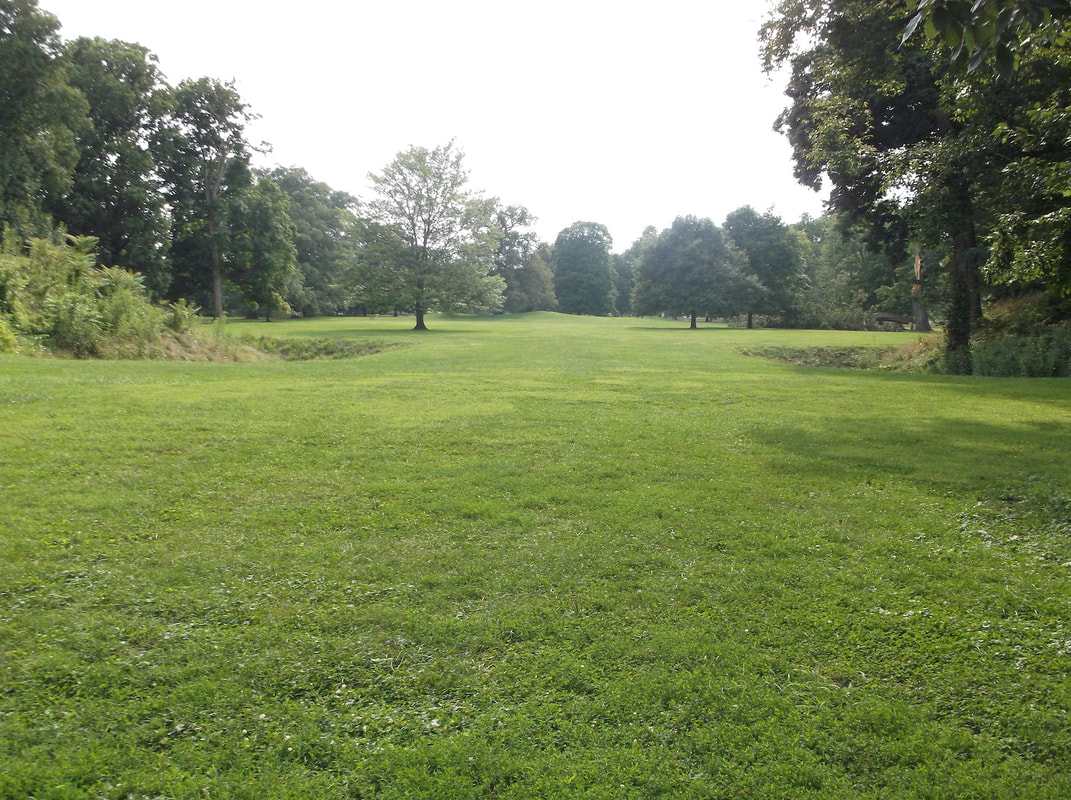
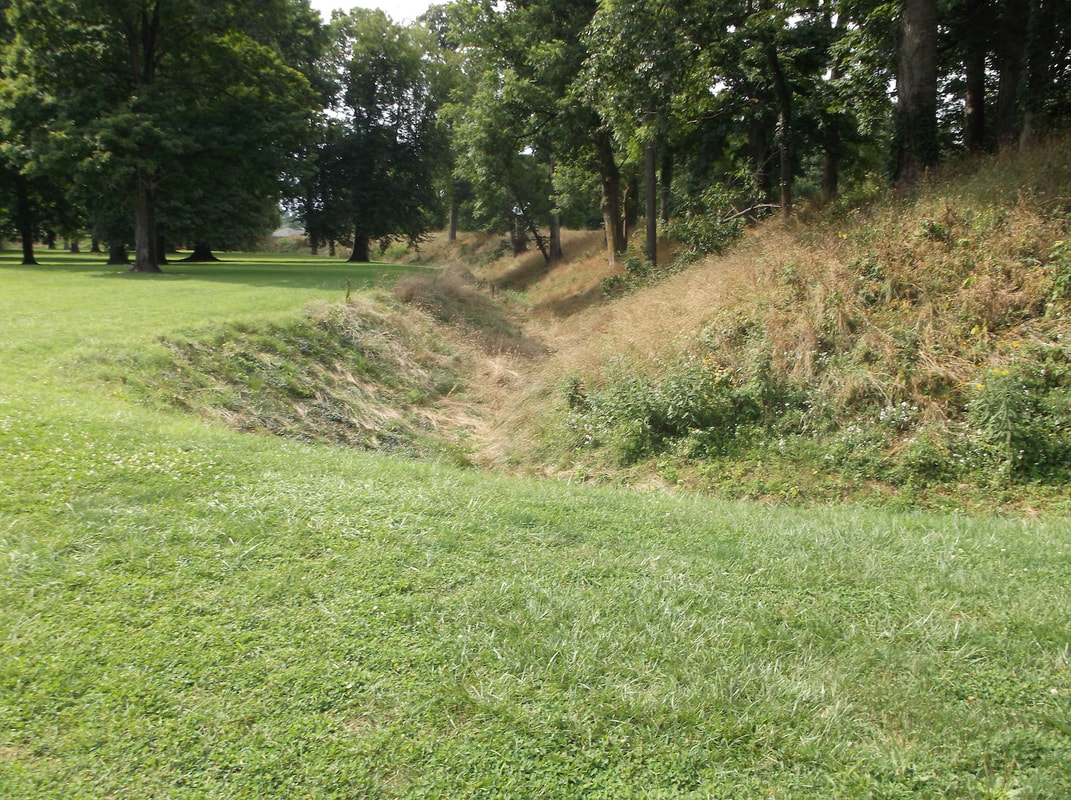
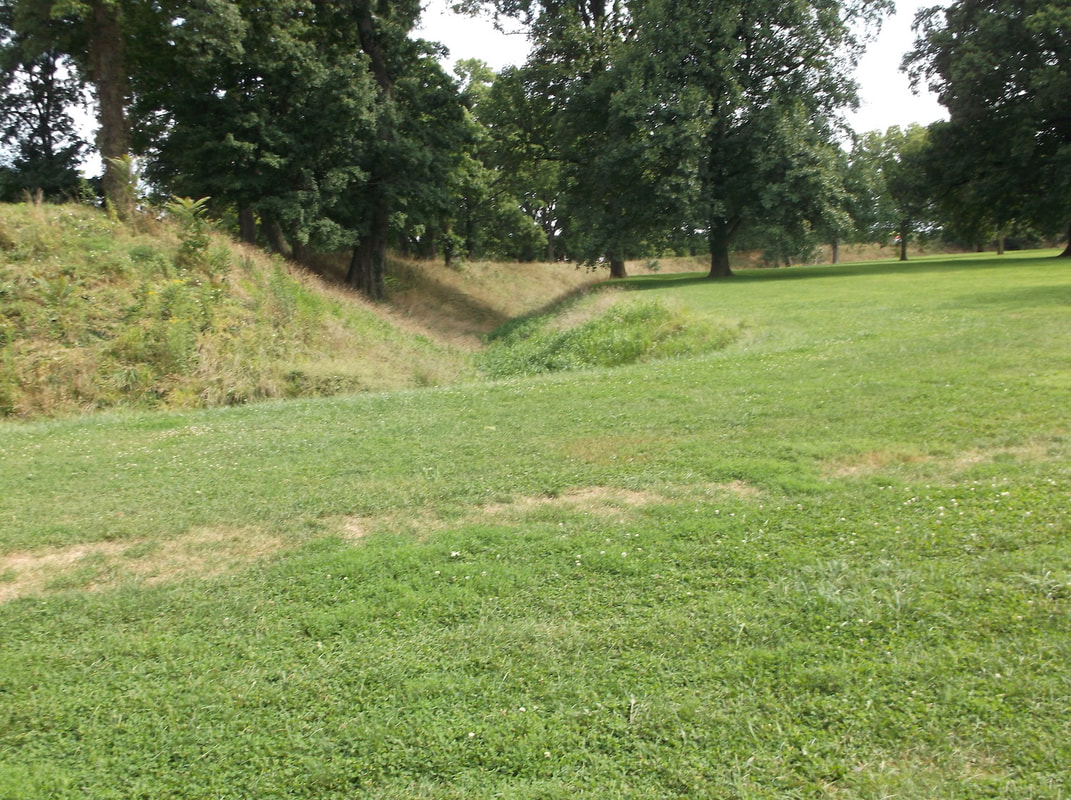
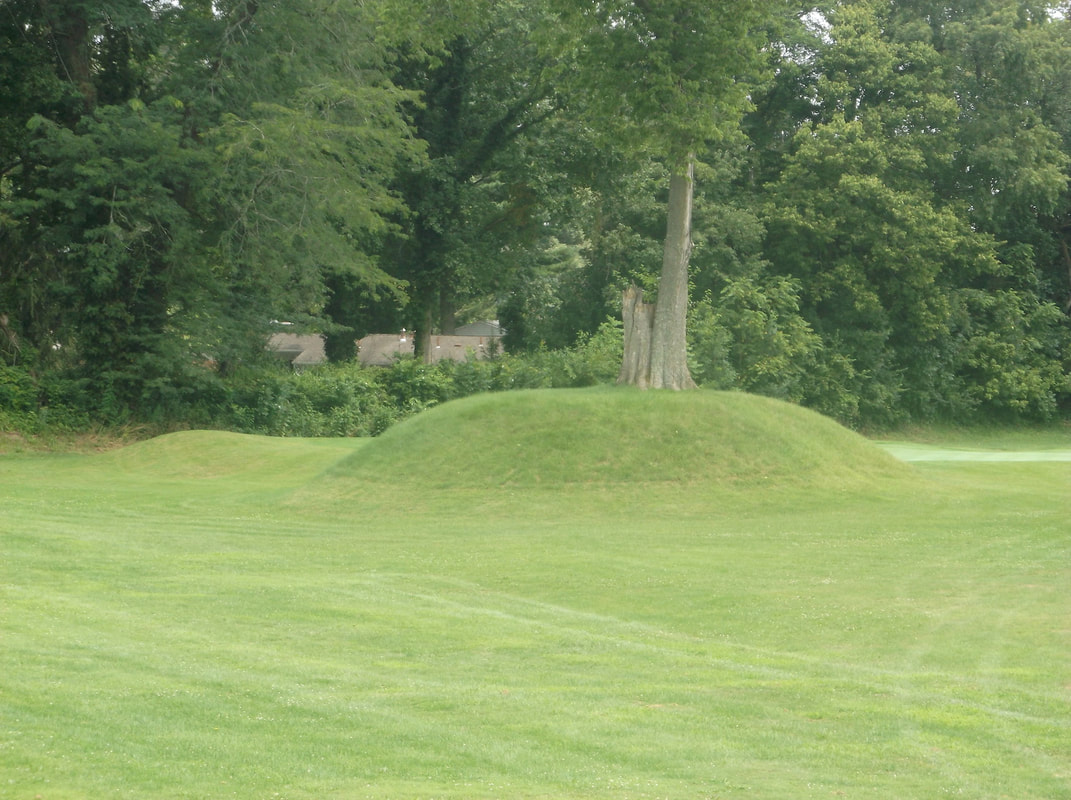
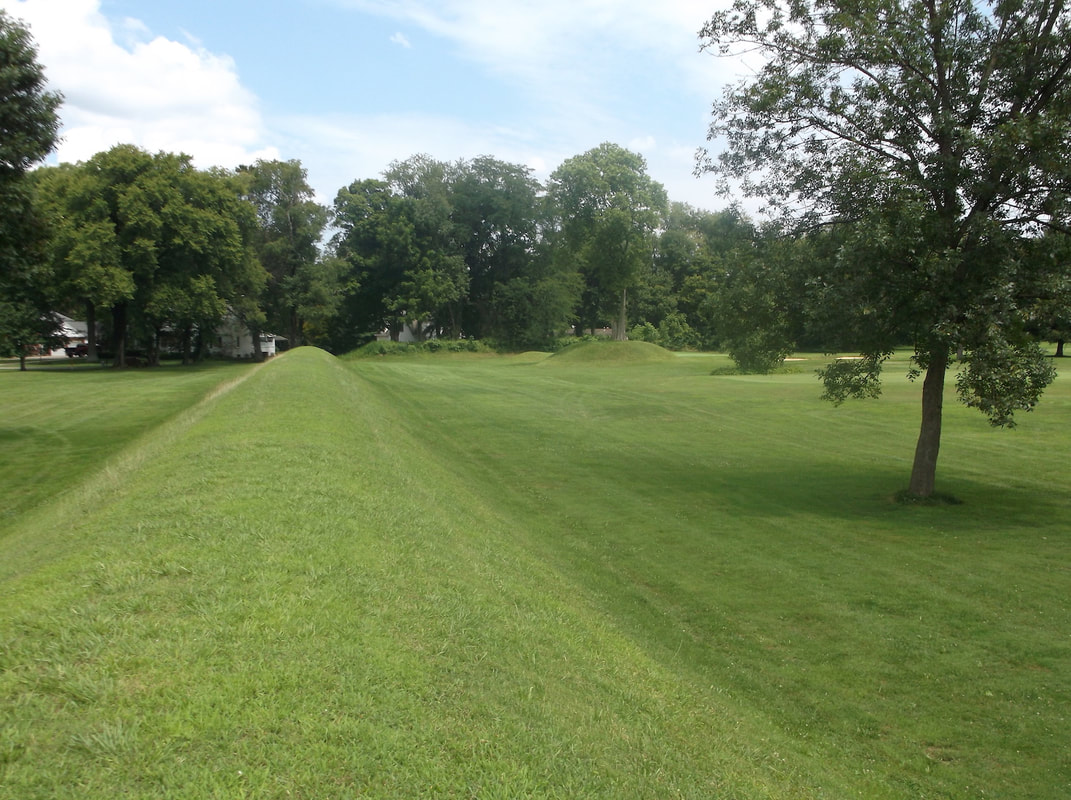

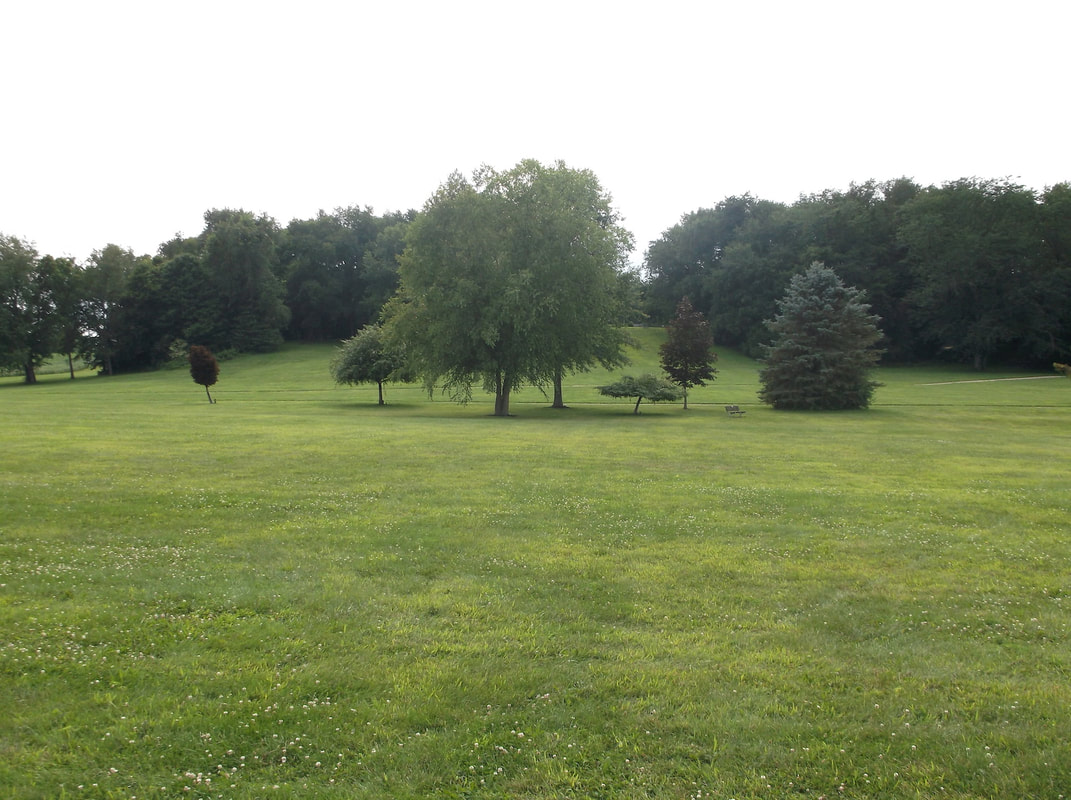
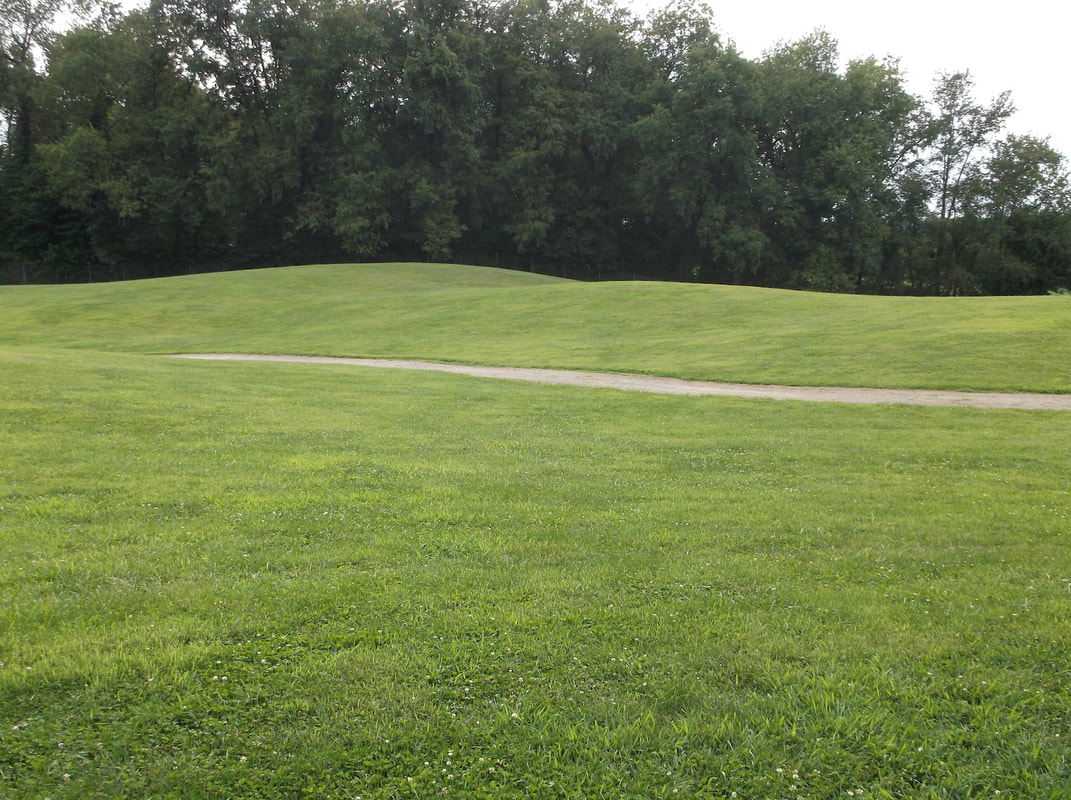
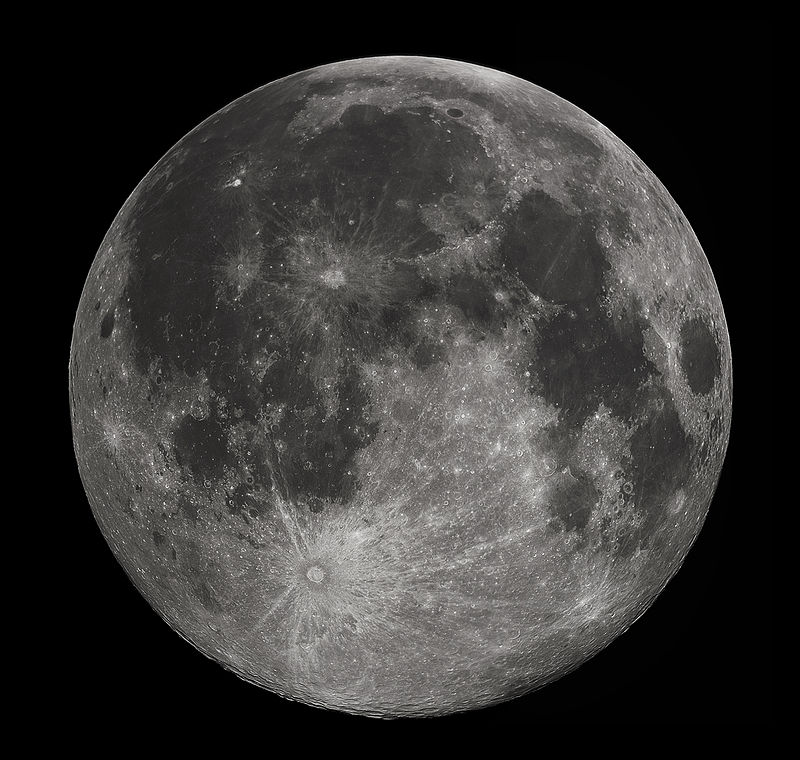
 RSS Feed
RSS Feed
